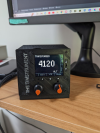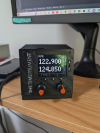- Joined
- Jul 17, 2019
- Messages
- 1,933
- Location
- Chicago suburbs
- Display Name
Display name:
The Little Arrow That Could
Several years ago I got big into DIY electronics as a hobby. The vast majority of my time was spent building Arduino projects, but I dabbled a bit in Raspberry Pi too.
In the peak of my obsession with those I went overboard buying up all sorts of microcontrollers, sensors and servos and I kind of forgot how much stuff I amassed. Due to work, flying and general life priorities I abandoned it for a few years.
But now since I have some free time (work is slow + airplane is in annual) I've busted those boxes back out and I'm looking for something to build, preferably something applicable to aviation.
Anyone have any suggestions on aviation-esque stuff that would be fun/challenging? I know most things you can buy commercial off the shelf these days but its more fun to build it yourself and see it work.
In the peak of my obsession with those I went overboard buying up all sorts of microcontrollers, sensors and servos and I kind of forgot how much stuff I amassed. Due to work, flying and general life priorities I abandoned it for a few years.
But now since I have some free time (work is slow + airplane is in annual) I've busted those boxes back out and I'm looking for something to build, preferably something applicable to aviation.
Anyone have any suggestions on aviation-esque stuff that would be fun/challenging? I know most things you can buy commercial off the shelf these days but its more fun to build it yourself and see it work.





